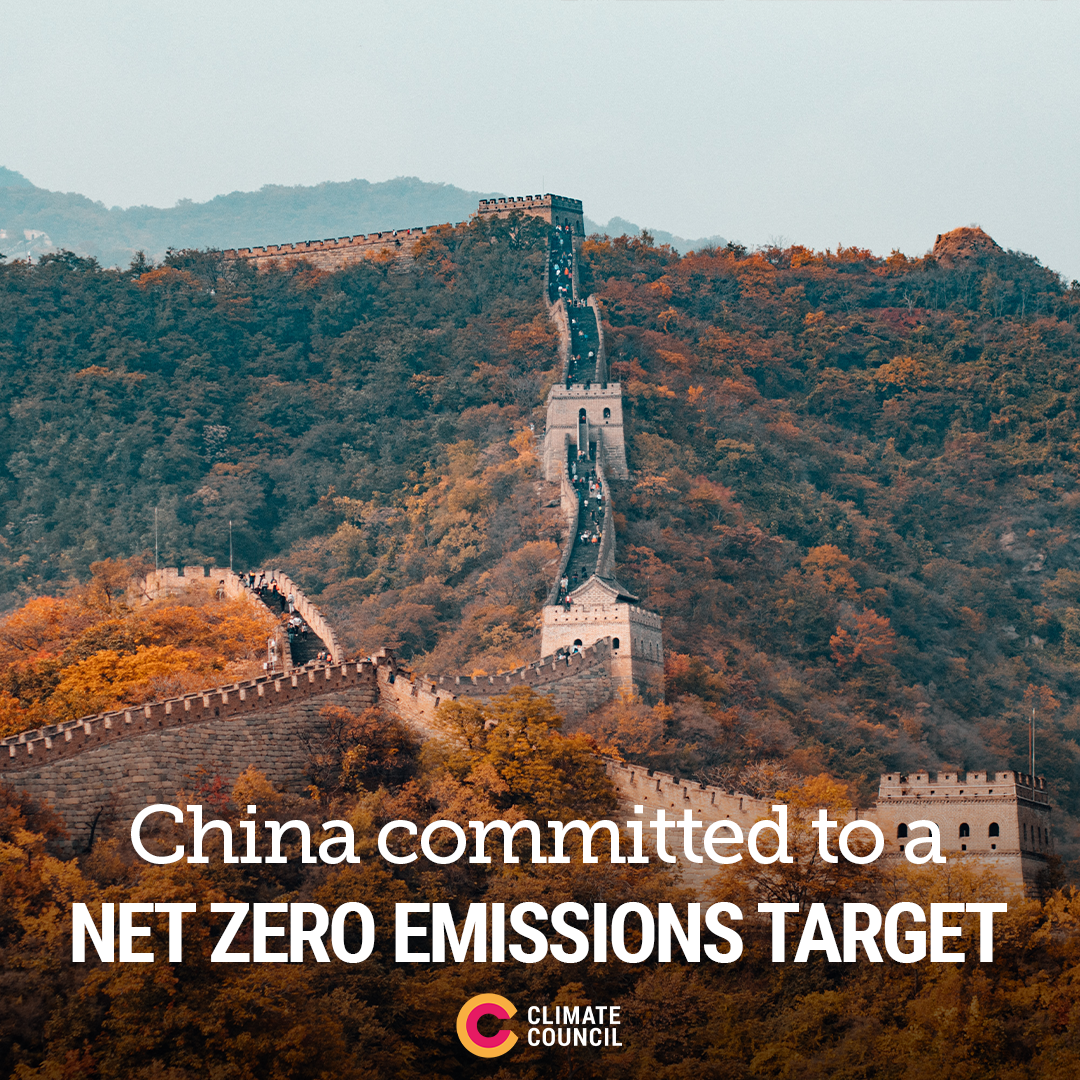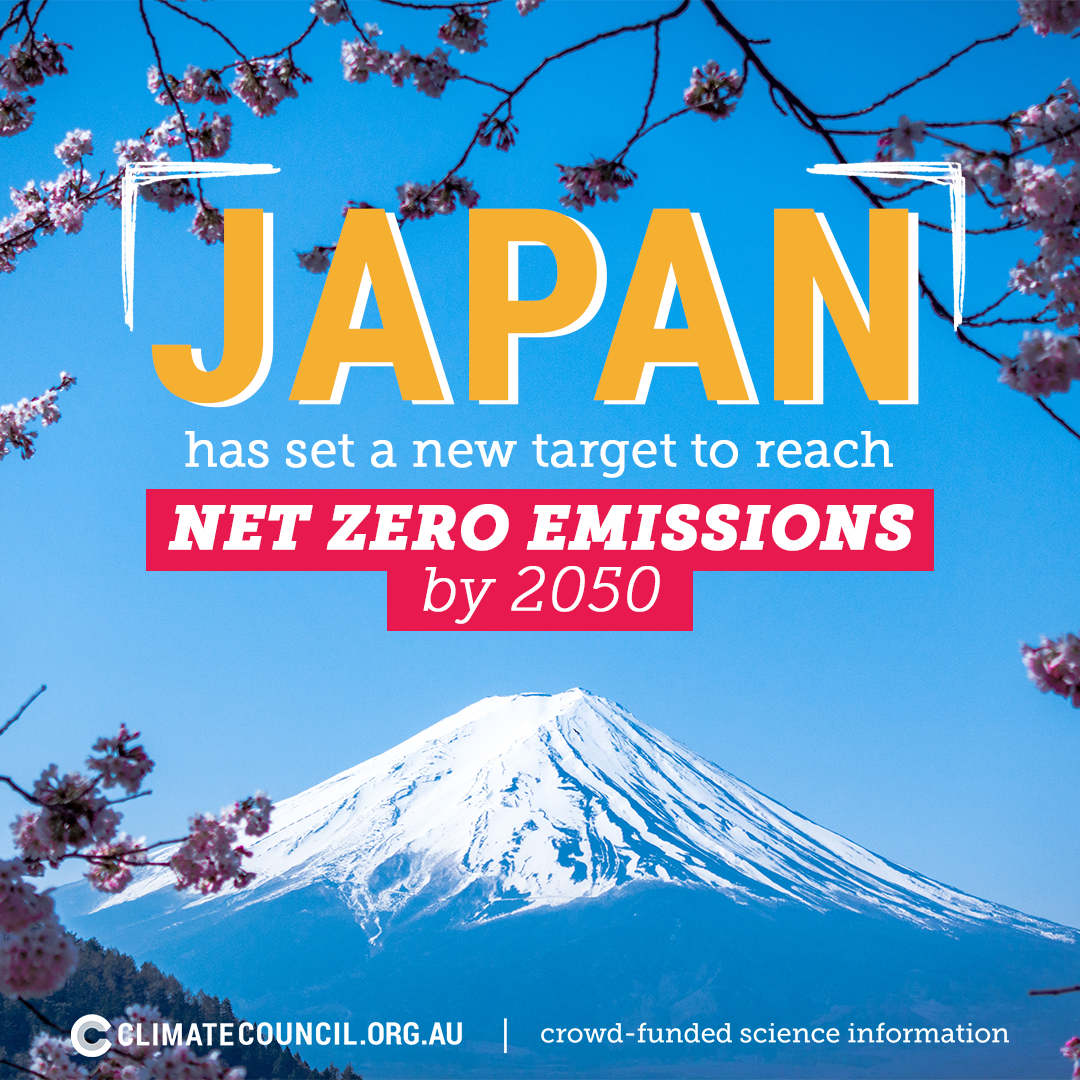Some seismic shifts are afoot in global climate and energy politics, and Australia had better be paying attention.
In the mayhem of 2020 – a year that began with the brutal Black Summer fires, was then overrun by the COVID-19 pandemic, and now has us anxiously watching the US election – it can be easy to miss the more positive trends.
Last month, while the Australian Government was busy touting its much maligned “gas-led recovery”, China, the world’s largest energy user and biggest greenhouse emitter, surprised the world by committing to net zero emissions. Climate and energy commentators reacted with an appropriate degree of caution, noting China’s pipeline of new coal projects both at home and abroad. Even so, it’s hard to overstate the implications of this new commitment for Australia. For the first time, the Chinese Government has effectively committed to moving beyond fossil fuels, and now has a stronger long-term commitment to climate action that the Australian Government. Its new goal will require massive investment, which is likely to push renewable prices down further, and spur a surge in innovation across new industries including renewable hydrogen and renewable manufacturing.

China’s move came as the European Union – collectively the world’s largest economy – edged closer to strengthening its emissions reduction target for 2030. This is particularly encouraging, as while much of the world’s attention is on long-term net zero targets, in reality it is the depth of global emissions reductions over the next decade that will determine if we spiral from climate crisis to climate catastrophe. The entire EU bloc is expected to lift its current target of reducing emissions by 40% below 1990 levels by 2030 to at least 55%. Despite being ravaged by COVID-19, the EU is not backing away from its role as climate leader but embarking on a European Green Deal designed to deliver jobs, better health and ongoing prosperity through clean energy and other climate solutions.
The UK may have left the EU but remains ahead of the pack on climate change. The birthplace of the industrial revolution and host of the next round of international climate negotiations (COP26) is one of the few countries worldwide to have cemented its net zero target in law. Earlier this year the UK went months without burning any coal for electricity. This week it seems conservative Prime Minister Boris Johnson has again been urging Scott Morrison to step up.
Meanwhile, India, the world’s second most populous country and still far behind China in terms of economic development, is on course to smash its initial commitment to the Paris Agreement. In 2015 Narendra Modi announced India would build a staggering 175GW of renewable energy capacity by 2022 – over three times Australia’s entire electricity generating capacity from all sources. Motivated in part by the need to tackle the deadly air pollution from coal and other sources, India will comfortably meet this goal.
And the hits keep coming. Japan has just announced plans to reach net zero emissions by 2050. Like Australia, Japan has till now remained stubbornly wedded to coal, particularly after the Fukushima disaster spelt troubles for its nuclear industry. And here’s where Canberra really needs to sit up and listen: Japan is Australia’s biggest importer of Australian thermal coal and Australian liquified natural gas (LNG). South Korea, the third largest importer of Australian thermal coal after Japan and China, has also formally committeded to net zero emissions by 2050. Put simply, unless we get serious about a managed transition out of high-carbon exports and start realizing our potential as a renewable export superpower, there’ll be some rough times ahead. Fortunately, Australia has all it needs to build the jobs and industries of the future, bringing new prosperity to our regions.

Government pronouncements are one thing. It’s actual change that matters. On that front, we are also seeing some interesting signs. Jera, Japan’s biggest power generator, and the biggest single customer of Australian coal, said it will shut all ‘inefficient’ coal-fired power stations by 2030. (As ever, the devil will be in the detail, and whether Jera plans to keep open some stations that it regards as ‘efficient’ will have to be seen. But this announcement sends yet another important signal nonetheless.) South Korea –which after China has been the biggest bankroller of overseas coal-fired power stations – seems to have suddenly dropped a number of projects from its pipeline.
Closer to home, Pacific Island countries continue to lead by example and inspire the world with their determined efforts to confront the climate crisis. Fiji and the Marshall Islands were the first two countries to strengthen their contributions to the Paris Agreement. Many Pacific Island countries are not only committed to 100% renewable energy but well on their way to achieving this goal. Like in so many places, renewable energy is a win-win in the Pacific, avoiding greenhouse gas emissions while freeing countries from expensive fuel imports.
Of course, given the sheer gravity of the climate crisis and what sometimes seems like an unrelenting wave of bad news, it is easy to get carried away by a few reasons for optimism. By now we all know that net zero emissions by mid-century is not fast enough to keep us out of real trouble, and that no large country has yet put forward commitments that are in line with the long-term goals of the Paris Agreement. Furthermore, we need to treat all these announcements with the same degree of healthy cynicism as we would those from our own government. For China, the real test will be in the details of the government’s next five-year plan, due in 2021, and above all in how quickly China starts weaning itself of coal. Encouragingly, an energy roadmap from one of China’s most influential climate and energy research institutes suggests that China may indeed be planning to mostly eliminate fossil fuels – something that would have been unthinkable only a few years ago.
All in all, there is one thing about which we can be certain: With this kind of momentum internationally, Australia is in for a rough ride if it thinks it can show up to the next round of international climate negotiations at the end of 2021 without having substantially strengthened its 2030 emissions reduction target and committed to net zero emissions before 2050. This is true irrespective of the outcome from the US in November. If there’s a change of government in the US, the pressure on Australia will be colossal.